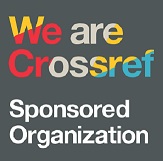LECTURERS’ POLITENESS STRATEGIES AND STUDENTS’ COMPLIANCE IN ENGLISH FOR FOREIGN LANGUAGE (EFL) CLASS
Abstract
Keywords
Full Text:
PDFReferences
Bogdan, C. R., & Bikien, K. S. (1992). Qualitative Research for Education. An Introduction to Theory and Methods. United States of America: Allyn and Bacon.
Brown, P., & Levinson, S. (1987). Politeness: Some Universals in Language Usage. Cambridge University Press.
Celce-murcia, M. (2007). Celce-Murcia, M. (2007).pdf. Intercultural Language Use and Language Learning, 41–57.
Cialdini, R. B., & Goldstein, N. J. (2004). Social Influence: Compliance and Conformity. Annual Review of Psychology, 55(1), 591–621. https://doi.org/10.1146/annurev.psych.55.090902.142015
Consolo, D. A. (2006). Classroom oral interaction in foreign language lessons and implications for teacher development. Linguagem & Ensino, 9(2), 33–55.
Eelen, G. (2001). A Critique of Politeness Theories. Manchester, UK & Northampton, MA: St. Jerome Publishing.
Eggins, S., & D., S. (1997). Analysing Casual Conversation.
Ellis, R. (1997). Second Language Acquisition. USA: Oxford University Press.
Fitriyah, F., Emzir, E., & Ridwan, S. (2019). Cultural Values of Politeness in Efl Classroom: a Study of Etnography of Communication. Language Literacy: Journal of Linguistics, Literature, and Language Teaching, 3(2), 207–216. https://doi.org/10.30743/ll.v3i2.1965
Goffman, E. (1967). On Face-Work an Analysis of Ritual Elements in Social Interaction. New York: Doubleday.
Jiang, X. (2010). A Case Study of T eacher ’ s Politeness in EFL Class, 1(5), 651–655. https://doi.org/10.4304/jltr.1.5.651-655
Krippendorff, K. (2003). Content Analysis: An Introduction to Its Methodology Ch2 and 4. Content Analysis: An Introduction to Its Methodology. Retrieved from http://www.uk.sagepub.com/textbooks/Book234903
Lakoff, R. T., & Ide, S. (2005). Broadening the horizon of linguistic politeness. Philadelphia USA: John Benjamins Publisihing company. https://doi.org/10.1080/00437956.2016.1180005
Leech, G. (2014). The Pragmatics of Politeness. The Pragmatics of Politeness, 1–368. https://doi.org/10.1093/acprof:oso/9780195341386.001.0001
Levinson, B. &. (1987). Politeness ( Brown and Levinson 1987 ). Reading.
Littlejohn, S. W., & Foss, K. A. (2008). Theories of Human Communication. Harlow: Wadsworth Publishing Company.
Miles, M. B., & A. Huberman, M. (1994). Qualitative Data Analysis, An expanded Sourcebook 2nd Edition.
Peng, L., Xie, F., & Cai, L. (2014). A Case Study of College Teacher ’ s Politeness Strategy in EFL Classroom, 4(1), 110–115. https://doi.org/10.4304/tpls.4.1.110-115
Sabee, C. M., & Wilson, S. R. (2005). Students’ primary goals, attributions, and facework during conversations about disappointing grades. Communication Education, 54(3), 185–204. https://doi.org/10.1080/03634520500356154
Senowarsito. (2013). Politeness Strategies in teacher-student interaction in an EFL classroom context. TEFLIN Journal, 24, 82–96. https://doi.org/10.15639/TEFLINJOURNAL.V24I1/82-96
Song, S. (2012). Politeness and Culture in Second Language Acquisition. New York: Palgrave Macmillian.
Watts, R. J. (2003). Politeness. Cambridge Uinversiy Press.
Zhang, Q. (2009). Teacher Request Politeness: Effect on students ‘positive emotions and compliance intention. Fairfield University: Mexico.
DOI: https://doi.org/10.30743/ll.v4i1.2463
Refbacks
- There are currently no refbacks.










